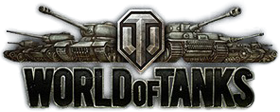ZAM Rolls Into Battle in World of Tanks
In honor of the game's official launch, Paul "LockeColeMA" Cleveland jumped into some tanks and blew stuff up.

The typical fantasy roleplaying online games can get tiring after a while. Many World of Warcraft players complain that PvP comes down to “feature of the month” specifications and classes, and other classes don't have a chance. Gear becomes an insurmountable barrier between the veteran players and the newbies – tactics get thrown aside for brute strength and damage.
But the field of online gaming is wide and varied, as proven by World of Tanks. We've been keeping our eye on this free-to-play game for quite some time through interviews, previews and a BFF Report, as well as all of the news that comes out of wargaming.net. To coincide with its official launch in North America and Europe on April 12, I decided to dive into this non-fantasy MMO that recently set a Guinness World Record for “Most Players Online Simultaneously on One MMO server.”
The game puts players in the seats of a multitude of tanks from the 1930-1950 era and features team combat. Players earn experience by attacking in battle and credits as a currency; the experience allows research for new upgrades, and the credits allow the player to buy the upgrades and consumable items to give an edge in fights. I had a chance to try out the open beta leading up to the release, and I can say without a doubt – I die way too easily. And I had a blast doing it!
During the beta, all players started off with three tanks: introductory-level light tanks from the US, USSR and Germany. Each has slight differences – I preferred the American tank, the TI Cunningham, because it had more health than the other tanks and faster acceleration and speed. In the beginning I disliked the German Leichtetraktor because its speed and acceleration were terrible. However, as tanks participate in battles they gain experience to research upgrades. By putting points in the suspension and engine, soon my Leichtetraktor was almost as fast the as T1, making battles a bit easier.

As my tanks gained more experience and I completed more research, I unlocked new tank classes: medium tanks, upgraded light tanks and SPGs (Self-Propelled Guns, also known as artillery). Due to the matchmaking system in World of Tanks, by switching to these types of tanks I could be paired with other types as well. With the introductory tanks, almost everyone had light tanks and the tactics were usually “Don't get killed before killing an enemy.” Moving on to medium tanks and SPGs, the tactics and fun level suddenly kicked up a notch. Instead of rushing toward the enemy, for example, my SPG would sit back and wait for light tanks to scout out enemy tanks so I could rain pain down upon them from across the field (my best ratio is from my SPG, with 4 kills out of 15 tanks in a single match).
Unlocking the higher matchmaking tiers led to an important discovery – having a battle strategy was the single most important part of winning a match in World of Tanks. For example, traveling alone was generally suicide, especially in a light tank – coming upon two or more enemies spelled certain doom. Each type of tank had its own role – light tanks were for scouting and taking out enemy SPGs; SPGs were for taking out stubborn heavy tanks; heavy tanks were for taking out medium and light tanks; tank destroyers were for taking out heavy tanks; and medium tanks tried to down light tanks or defend SPGs. My first dozen battles resulted in me rushing headlong into death's explosive embrace; but once I figured out that by hanging back and waiting for the enemy to come to me I could at least get a few hits in (if not kill a foe), my ratios increased along with my experience points.
The game features several battle maps with varied terrain and tactical advantages. Pagorki, for example, had hilly terrain with large mountains and boulders providing great cover – but also several ways to the rival base, which would need to be covered. Prokhorovka, on the other hand, featured a central battlefield with smaller roads off to the edges of the map – this encouraged either “trench warfare” (with one or both sides hunkering down to shoot at each other), or small raids along the edges to sneak behind and take out the enemies. As the leader of several of these raids, I can bear witness that sitting and waiting for the enemy seemed by far the more effective strategy! Did I mention I died a lot?
Continued on Page 2.




